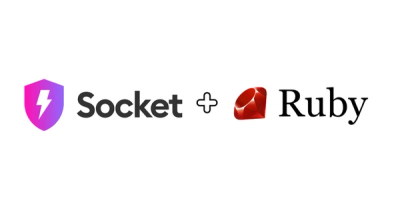
Security News
CISA Extends MITRE Contract as Crisis Accelerates Alternative CVE Coordination Efforts
CISA extended MITRE’s CVE contract by 11 months, avoiding a shutdown but leaving long-term governance and coordination issues unresolved.
@arbitrum/sdk
Advanced tools
TypeScript library for client-side interactions with Arbitrum. Arbitrum SDK provides common helper functionality as well as access to the underlying smart contract interfaces.
Below is an overview of the Arbitrum SDK functionality. See the tutorials for further examples of how to use these classes.
import { getL2Network, EthBridger } from '@arbitrum/sdk'
const l2Network = await getL2Network(
l2ChainID /** <-- chain id of target Arbitrum chain */
)
const ethBridger = new EthBridger(l2Network)
const ethDepositTxResponse = await ethBridger.deposit({
amount: utils.parseEther('23'),
l1Signer: l1Signer /** <-- connected ethers-js Wallet */,
l2Provider: l2Provider /** <--- ethers-js Provider */,
})
const ethDepositTxReceipt = await ethDepositTxResponse.wait()
/** check ethDepositTxReceipt.status */
import { L1TransactionReceipt, L1ToL2MessageStatus } from '@arbitrum/sdk'
const l1TxnReceipt = new L1TransactionReceipt(
txnReceipt /** <-- ethers-js TransactionReceipt of an ethereum tx that triggered an L1 to L2 message (say depositting a token via a bridge) */
)
const l1ToL2Message = (
await l1TxnReceipt.getL1ToL2Messages(
l2Signer /** <-- connected ethers-js Wallet */
)
)[0]
const res = await l1ToL2Message.waitForStatus()
if (res.status === L1ToL2MessageStatus.FUNDS_DEPOSITED_ON_L2) {
/** Message wasn't auto-redeemed; redeem it now: */
const response = await l1ToL2Message.redeem()
const receipt = await response.wait()
} else if (res.status === L1ToL2MessageStatus.REDEEMED) {
/** Message succesfully redeeemed */
}
import { L2TransactionReceipt } from '@arbitrum/sdk'
const l2TxnReceipt = new L2TransactionReceipt(
txnReceipt /** <-- ethers-js TransactionReceipt of an arbitrum tx */
)
/** Wait 3 minutes: */
await new Promise(resolve => setTimeout(resolve, 1000 * 60 * 3000))
// if dataIsOnL1, sequencer has posted it and it inherits full rollup/L1 security
const dataIsOnL1 = await l2TxnReceipt.isDataAvailable(l2Provider, l1Provider)
Arbitrum SDK can be used to bridge assets to/from the rollup chain. The following asset bridgers are currently available:
All asset bridgers have the following methods:
When assets are moved by the L1 and L2 cross chain messages are sent. The lifecycles of these messages are encapsulated in the classes L1ToL2Message and L2ToL1Message. These objects are commonly created from the receipts of transactions that send cross chain messages. A cross chain message will eventually result in a transaction being executed on the destination chain, and these message classes provide the ability to wait for that finalizing transaction to occur.
Arbitrum SDK comes pre-configured for Mainnet and Goerli, and their Arbitrum counterparts. However, the networks functionality can be used to register networks for custom Arbitrum instances. Most of the classes in Arbitrum SDK depend on network objects so this must be configured before using other Arbitrum SDK functionality.
As part of normal operation the Arbitrum sequencer will send messages into the rollup chain. However, if the sequencer is unavailable and not posting batches, the inbox tools can be used to force the inclusion of transactions into the rollup chain.
First, make sure you have a Nitro node running. Check out the nitro repo, and run the following command ./test-node.bash --init --no-blockscout
After the node has started up (that could take up to 20-30 mins), run yarn gen:network.
Once done, finally run yarn test:integration to run the integration tests.
Defaults to Arbitrum Goerli, for custom network use --network flag.
Arbitrum Goerli expects env var ARB_KEY to be prefunded with at least 0.02 ETH, and env var INFURA_KEY to be set.
(see integration_test/config.ts)
Bridging a new token to L2 (i.e., deploying a new token contract) through the standard gateway is done by simply depositing a token that hasn't yet been bridged. This repo includes a script to trigger this initial deposit/deployment:
Clone arbitrum-sdk
yarn install (from root)
Set PRIVKEY environment variable (you can use .env) to the key of the account from which you'll be deploying (account should have some balance of the token you're bridging).
Set MAINNET_RPC environment variable to L1 RPC endpoint (i.e., https://mainnet.infura.io/v3/my-infura-key)
yarn bridgeStandardToken
Required CL params:
networkID:number — Chain ID of L2 network
l1TokenAddress:string — address of L1 token to be bridged
Ex:
yarn bridgeStandardToken --networkID 421611 --l1TokenAddress 0xdf032bc4b9dc2782bb09352007d4c57b75160b15 --amount 3
FAQs
Typescript library client-side interactions with Arbitrum
The npm package @arbitrum/sdk receives a total of 37,886 weekly downloads. As such, @arbitrum/sdk popularity was classified as popular.
We found that @arbitrum/sdk demonstrated a healthy version release cadence and project activity because the last version was released less than a year ago. It has 4 open source maintainers collaborating on the project.
Did you know?

Socket for GitHub automatically highlights issues in each pull request and monitors the health of all your open source dependencies. Discover the contents of your packages and block harmful activity before you install or update your dependencies.

Security News
CISA extended MITRE’s CVE contract by 11 months, avoiding a shutdown but leaving long-term governance and coordination issues unresolved.

Product
Socket's Rubygems ecosystem support is moving from beta to GA, featuring enhanced security scanning to detect supply chain threats beyond traditional CVEs in your Ruby dependencies.

Research
The Socket Research Team investigates a malicious npm package that appears to be an Advcash integration but triggers a reverse shell during payment success, targeting servers handling transactions.